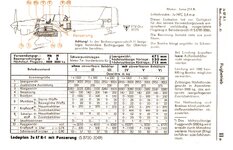Wild_Bill_Kelso
Senior Master Sergeant
- 3,231
- Mar 18, 2022
It was a dead duck in 1940 without escort, but so was a Wellington or a DB-3.
So was the Ju 87.
This assumes a decent number of interceptors vs bombers.
My point is that they were not using the He 111 in day time strikes against ground targets in the Western desert, almost ever, from say Dec 1941, whereas Stukas were still being used well into 1943. Fighter protection for the Axis bombers was always intermittent at best.
Last edited:

